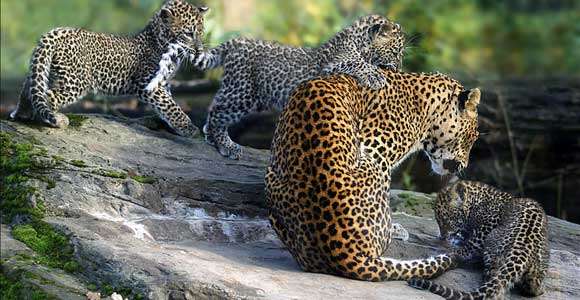In antiquity, Sri Lanka was known to travellers by a variety of names. According to Mahavamsa, the legendary Prince Vijaya named the land Tambapanni ("copper-red hands" or "copper-red earth"), because his followers' hands were reddened by the red soil of the area. In Hindu mythology, such as the Mahabharata, the island was referred to as Lankā ("Island"). In Tamil, the island is referred to as Eelam since ancient times.The island was also known as Cerentivu, which means "island of Cheras".Ancient Greek geographers called it Taprobanā (Ancient Greek: Ταπροβανᾶ) or Taprobanē (Ταπροβανῆ) from the word Tambapanni. The Persians and Arabsreferred to it as Sarandīb (the origin of the word "serendipity") from the word Cerentivu.Ceilão, the name given to Sri Lanka by the Portuguese Empire when it arrived in 1505, was transliterated into English as Ceylon. As a British crown colony, the island was known as Ceylon; it achieved independence as the Dominion of Ceylon in 1948.
The country is known in Sinhalese as Śrī Laṃkā (Sinhalese: ශ්රී ලංකා) and in Tamil as Ilaṅkai In 1972, its formal name was changed to "Free, Sovereign and Independent Republic of Sri Lanka". Later in 1978 it was changed to the "Democratic Socialist Republic of Sri Lanka"As the name Ceylon still appears in the names of a number of organisations, the Sri Lankan government announced in 2011 a plan to rename all those over which it has authority. Lying within the Indomalaya ecozone, Sri Lanka is one of 25 biodiversity hotspots in the world. Although the country is relatively small in size, it has the highest biodiversity density in Asia. A remarkably high proportion of the species among its flora and fauna, 27% of the 3,210 flowering plants and 22% of the mammals, are endemic. Sri Lanka has declared 24 wildlife reserves, which are home to a wide range of native species such as Asian elephants, leopards, sloth bears, the unique small loris, a variety of deer, the purple-faced langur, the endangered wild boar, porcupines and Indian pangolins.
Yala National Park in the southeast protects herds of elephant, deer, and peacocks. The Wilpattu National Park in the northwest, the largest national park, preserves the habitats of many water birds such as storks, pelicans, ibis, and spoonbills. The island has four biosphere reserves: Bundala, Hurulu Forest Reserve, the Kanneliya-Dediyagala-Nakiyadeniya, and Sinharaja. Of these, Sinharaja forest reserve is home to 26 endemic birds and 20 rainforest species, including the elusive red-faced malkoha, the green-billed coucal and the Sri Lanka blue magpie. Maha rath mala (Rhododendron arboreum ssp. zeylanicum) is a rare sub-species of Rhododendron arboreum found in Central Highlands of Sri Lanka. The untapped genetic potential of Sinharaja flora is enormous. Of the 211 woody trees and lianas within the reserve, 139 (66%) are endemic. The total vegetation density, including trees, shrubs, herbs and seedlings, has been estimated at 240,000 individuals per hectare.
The Minneriya National Park borders the Minneriya tank, which is an important source of water for numerous elephants (Elephus maximus) inhabiting the surrounding forests. Dubbed "The Gathering", the congregation of elephants can be seen on the tank-bed in the late dry season (August to October) as the surrounding water sources steadily disappear. The park also encompasses a range of micro-habitats which include classic dry zone tropical monsoonal evergreen forest, thick stands of giant bamboo, hilly pastures (patanas), and grasslands (talawas).
Sri Lanka is home to over 250 types of resident birds. It has declared several bird sanctuaries including Kumana. During the Mahaweli Program of the 1970s and 1980s in northern Sri Lanka, the government set aside four areas of land totalling 1,900 km2 (730 sq mi) as national parks. However, the country's forest cover, which was around 49% in 1920, had fallen to approximately 24% by 2010.



